Intel Expands 8th Gen Core: Core i9 on Mobile, Iris Plus, Desktop, Chipsets, and vPro
by Ian Cutress on April 3, 2018 3:01 AM ESTThe GIGABYTE H370N-WiFi
One of the motherboards we were sampled early was the GIGABYTE H370N-WiFi. This is GIGABYTE's latest mini-ITX motherboard, and in this case using the H370 chipset - traditionally GIGABYTE's H-series mini-ITX boards implement additional features, such as HDMI 2.0, and in this case, Wi-Fi.
The initial viewing of the board is one implemented more in function than overall style. The four-phase power delivery has a heatsink, the CPU is powered by an 8-pin 12V header, and the full length PCIe slot is shielded. GIGABYTE has two full-length DDR4 slots on this model, using double sided latches, and there are four SATA ports on the right hand side of the board out of a possible six that the chipset supports.
For storage, we get an M.2 2280 slot that sits above the chipset heatsink on the front, and another on the rear:
The two key parts on this motherboard that are going to be a little interesting start with the HDMI 2.0 implementation.
Here GIGABYTE is using the MegaChips MCDP2800 chip as an LSPCon to enable HDMI 2.0 from the processor. This is fairly common for HDMI 2.0, although due to the added LSPCon cost, we still only see it on a few motherboards - mostly GIGABYTE boards.
The other thing to note will be the Wi-Fi implementation. As the H370 chipset will support a native wireless solution, it all comes down to which companion RF model GIGABYTE has chosen. A quick look in the device manager shows this:
Here Intel is using the AC-9560, which is Intel's 2x2 802.11ac Wave 2 (160 MHz) solution - the high cost one.
Another feature on the new motherboards will be the USB 3.1 Gen 2 (10 Gbps) support. Here we see GIGABYTE not bothering with the fastest USB 3.1 implementation - all the ports here are USB 3.1 Gen 1 (5 Gbps) standard - even the port being enabled via a Type-C redriver. This means that this board could be seen as just a refresh of the 200-series version, with only the chipset changed to support the new processors. The motherboard does not have additional front panel headers for 10 Gbps either, meaning that this board uses exactly zero of the four that the chipset supports.
Elsewere on the board we spot the dual NICs, powered by Intel I219-V and Intel I211-AT controllers.
The audio, despite being a 3-plug stack, is powered by the Realtek ALC1220 codec.
In our box with the board, aside from the usual CD/manual/IO shield, we also got two SATA cables and a pair of Wi-Fi antenna. Nothing overly complex.


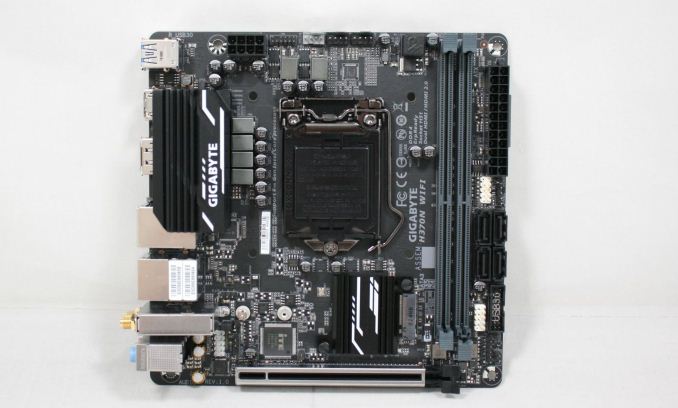
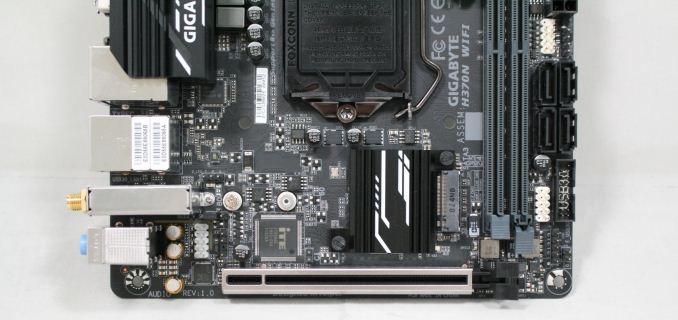
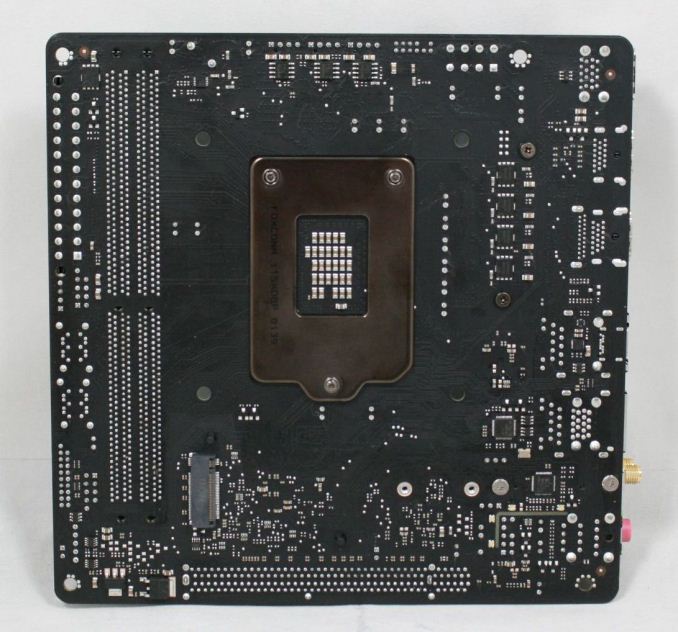
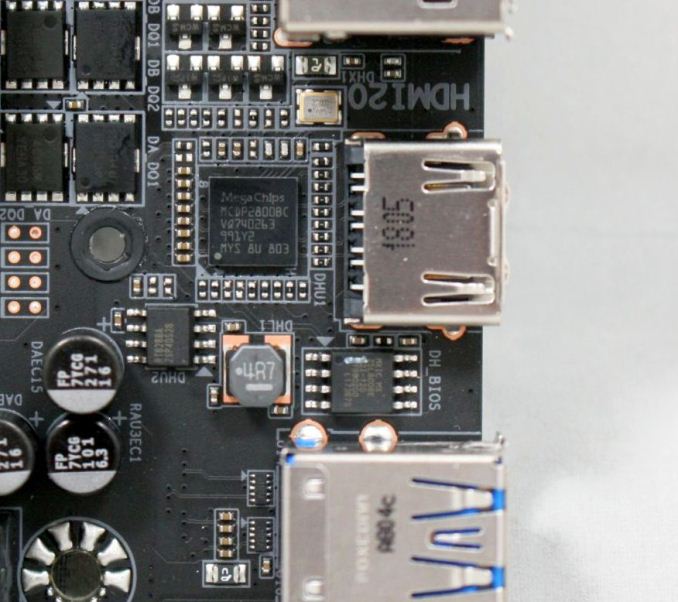
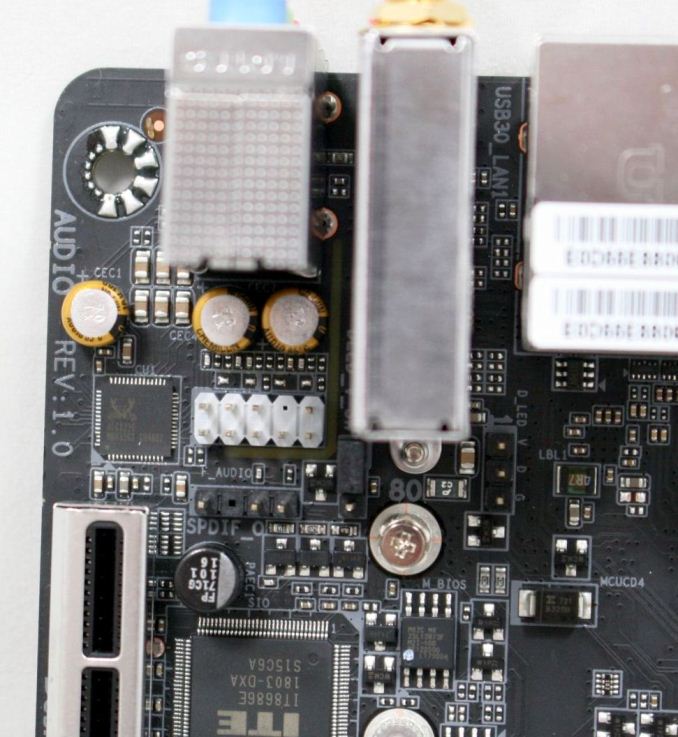
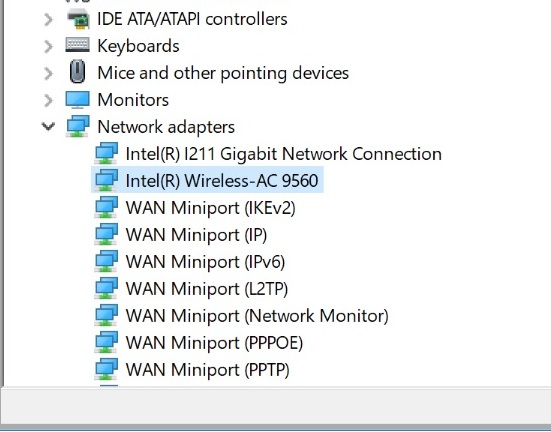

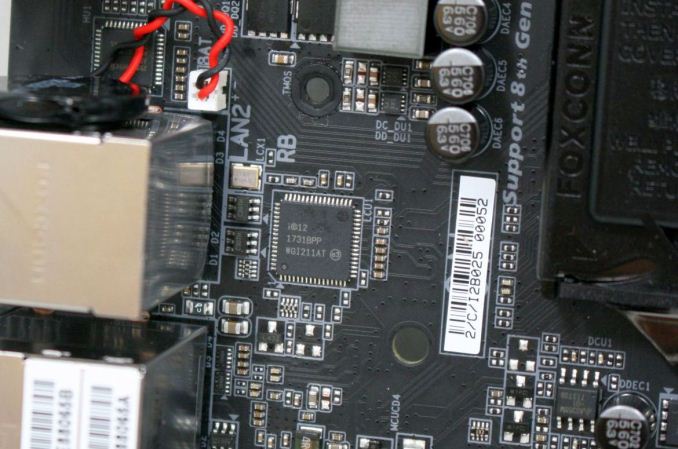

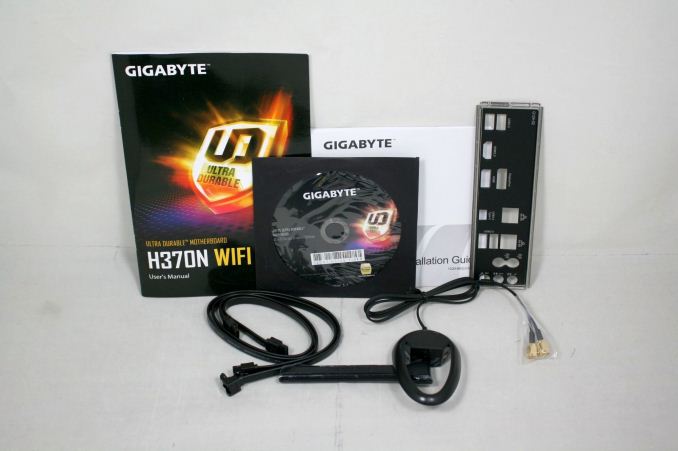














123 Comments
View All Comments
satai - Wednesday, April 4, 2018 - link
When you buy Core, you just buy the number of cores you want. Ignore everything else (unless you have some niche needs such as ECC).close - Wednesday, April 4, 2018 - link
@satai, stop being a shill. You already use some arguments that don't make sense (like insisting that everybody who buys a laptop knows the TDP of the CPU and can make the difference for performance based on that - which is asinine but here you are claiming it).Intel has been muddying the waters when it comes to branding for at least a decade. Dozens of SKUs meant only to confuse even people with more than basic knowledge. Mixed model numbers and random feature allocation that even this article confirms. Unless you walk around with the slide deck or learned the ARK website by heart you'll never know what model does what and what the numbering represents.
The Ryzen naming scheme is pretty clear and understandable at least by comparison. And while it could create some confusion between mobile and desktop specs, that's minor. There's a very solid overlap in corecount between mobile and desktop (like 4/4 and 4/8 models in the in the 3 and 5 ranges).
And I'm pretty sure it was done simply because it's the only way to fight a company that sold you the same crappy advancements YoY for a boatload of money. If even AT kicks Intel to the curb you know that whoever is defending them is either paid to do it or needs some adult supervision.
satai - Wednesday, April 4, 2018 - link
"nsisting that everybody who buys a laptop knows the TDP of the CPU"I don't say or think such a thing.
"Dozens of SKUs meant only to confuse even people with more than basic knowledge"
google with site:ark.intel.com
If you are not able o do this...
"The Ryzen naming scheme is pretty clear and understandable at least by comparison. "
Partly because AMD competes only in some segments...
"There's a very solid overlap in corecount between mobile and desktop (like 4/4 and 4/8 models in the in the 3 and 5 ranges)."
So you need to have apriori knowledge that this is about 5 and 3 and not for 7 anyway...
ToTTenTranz - Tuesday, April 3, 2018 - link
This update seems to put Microsoft in an awkward position for their high-end Surface Pro.They've been using the 15W Iris Pro part for high-end for quite a while. All of a sudden Intel only has 28W parts with Iris Pro. A visit to the ark website tells us all these Iris Pro 655 models only have a cTDP down to 20W, which is may not be nearly enough for Surface Pro's cooling system.
One would think the Ryzen 2700U would be the perfect replacement candidate for Microsoft, but the lack of LPDDR support may prove "mortal" for tablets, as we're yet to see a single 12" tablet with detachable keyboard based off AMD's 15W offerings.
But most of all why the hell are all these new sub-35W APU offerings not coming with LPDDR4 support? Looks like such a waste..
Gunbuster - Tuesday, April 3, 2018 - link
You make it sound like MS is not already in an awkward position on Surface after hitting a brick wall trying to get into Enterprise business and having on average eight daily visitors to their brick and mortar stores.PeachNCream - Tuesday, April 3, 2018 - link
"Many people expect Apple to be Intel’s biggest customer with these parts, however the future of the product line is unclear, with Intel unwilling to discuss the roadmap on what is being called ‘Kaby Lake-G’."There's already been recent news about Apple possibly moving to a different CPU supplier in Macintosh systems in 2020, so less than 2 years from now. Maybe in the short term, Apple will be a customer for such chips, but the mid- to long-term future appears to be quite different. Here's a link to a source article about that:
http://www.latimes.com/business/technology/la-fi-t...
Ratman6161 - Tuesday, April 3, 2018 - link
Apple has been hovering around 8% - 10% market share in laptops and a bit lesser share for desktops for a very long time. 10% is certainly enough for Intel to take notice but not enough for them to be coming out with CPU's specifically for them.satai - Wednesday, April 4, 2018 - link
Apple sells/buys with above average prices. That makes them pretty valuabe customer.Intel did some tweaks of CPUs for them before (smaller packaging for C2D for Air and possibly others).
12Parsecs - Wednesday, April 4, 2018 - link
https://ark.intel.com/products/77912/Intel-Xeon-Pr...;-)
tipoo - Tuesday, April 3, 2018 - link
There we go, ULV quads and Iris Plus were probably what the 13" rMBP was waiting on.